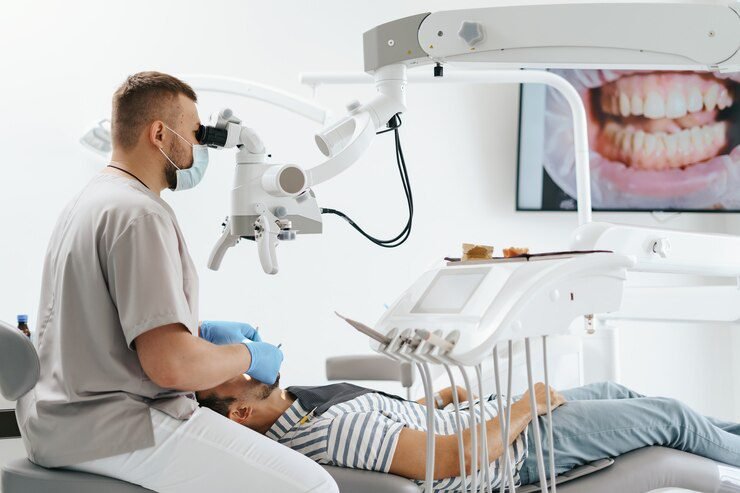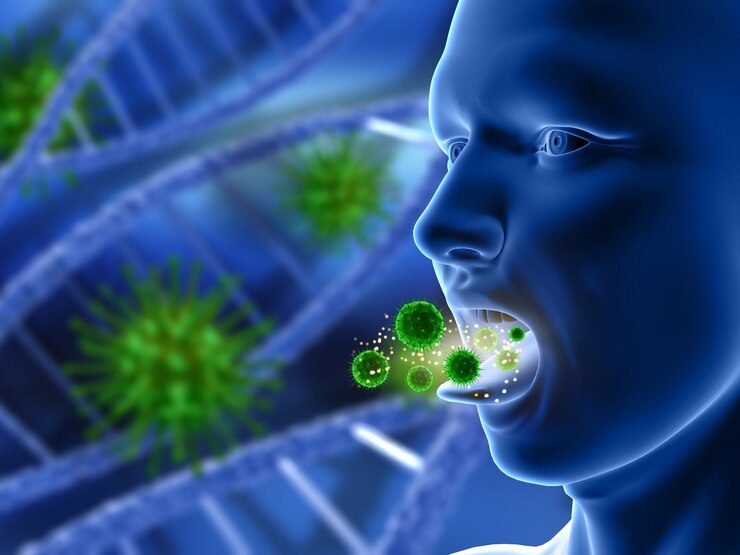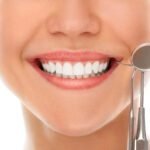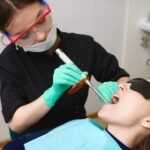Table of Contents
Oral Cancer Causes and Risk Factors


Oral cancer is a type of cancer that affects the tissues in the mouth, including the lips, tongue, gums, and throat. While the exact causes of oral cancer are still being studied, there are several known risk factors that can increase a person’s chances of developing this disease.
One of the primary risk factors for oral cancer is tobacco use. Whether it’s smoking cigarettes, cigars, or using smokeless tobacco products, all forms of tobacco have been linked to an increased risk of oral cancer. The harmful chemicals in tobacco can damage the cells in the mouth and throat, leading to the development of cancerous tumors.
Another significant risk factor for oral cancer is excessive alcohol consumption. Alcohol can irritate the cells in the mouth and throat, making them more vulnerable to the effects of other carcinogens. Additionally, studies have shown that the combination of tobacco and alcohol use significantly increases the risk of oral cancer.
Other risk factors for oral cancer include sun exposure, a family history of the disease, and certain viral infections, such as human papillomavirus (HPV). It is important to note that while these risk factors can increase the likelihood of developing oral cancer, not everyone who has these risk factors will develop the disease. Regular dental check-ups and a healthy lifestyle can help minimize the risk of oral cancer.
Common Symptoms of Oral Cancer


Oral cancer is a serious condition that can have devastating effects if not detected and treated early on. Being aware of the common symptoms of oral cancer is crucial in order to seek timely medical attention and increase the chances of successful treatment.
One of the most noticeable symptoms of oral cancer is a persistent sore or ulcer that does not heal within two to three weeks. This sore may be accompanied by pain or tenderness, and can develop anywhere in the mouth, including the tongue, lips, gums, and the lining of the cheeks. Another common symptom is difficulty in swallowing or chewing, which may indicate a tumor or blockage in the throat or mouth. Additionally, oral cancer can cause changes in the texture or color of oral tissues, such as white or red patches, lumps, or thickening of the skin. Other signs may include unexplained bleeding, numbness or loss of sensation in the mouth or lips, and persistent hoarseness or changes in voice.
If you experience any of these symptoms or notice any unusual changes in your oral health, it is important to consult a dentist or healthcare professional for a thorough examination. Remember, early detection is key in improving the chances of successful treatment and increasing survival rates. Regular dental check-ups are not only crucial for maintaining good oral health, but can also help in the early detection of oral cancer. By being proactive and vigilant about your oral health, you can take a proactive step towards protecting yourself and potentially saving your life.
Early Detection and the Importance of Regular Dental Check-Ups


Regular dental check-ups play a crucial role in the early detection of oral cancer. Dentists are trained to identify any abnormal changes in the mouth that may indicate the presence of cancerous cells. During a routine dental examination, your dentist will perform a thorough examination of your mouth, including checking for any new growths, sores that do not heal, or changes in the color or texture of the oral tissues. They may also conduct additional tests, such as a biopsy or an oral cancer screening using advanced technology, to further investigate any suspicious areas.
Early detection is key in successfully treating oral cancer. When oral cancer is diagnosed at an early stage, the chances of successful treatment and complete recovery are significantly higher. Regular dental check-ups allow for the timely identification of any potential signs of oral cancer, even before symptoms become noticeable. This early detection can lead to prompt intervention, ensuring that appropriate treatment measures can be initiated as soon as possible. By prioritizing regular dental visits, individuals can increase their chances of catching oral cancer early, potentially saving their lives.
The Role of HPV in Oral Cancer
Human papillomavirus (HPV) plays a significant role in the development of oral cancer. While tobacco and alcohol use have long been recognized as major risk factors for oral cancer, it is now becoming clear that HPV infection is also a leading cause. HPV is a sexually transmitted infection that affects both men and women. Unprotected oral sex can lead to the transmission of high-risk strains of HPV, which can then lead to the development of oral cancer.
Studies have shown a strong association between HPV infection and oropharyngeal cancers, which are cancers that occur in the back of the throat, including the base of the tongue and tonsils. In fact, the prevalence of HPV-related oral cancers has been steadily increasing over the past few decades, particularly among younger individuals. Researchers estimate that HPV-related oral cancers account for approximately 70% of all oropharyngeal cancers.
The presence of HPV in oral cancers has important implications for diagnosis, treatment, and prevention. HPV-related oral cancers tend to have distinct clinical and molecular characteristics compared to non-HPV related oral cancers. Patients with HPV-related oral cancers generally have a better prognosis and respond more favorably to treatment. Additionally, the development of effective HPV vaccines has provided an opportunity for prevention. Vaccination against HPV is recommended for both boys and girls, starting at age 11 or 12, to reduce the risk of HPV-related cancers, including oral cancer. Early detection and timely treatment remain crucial, highlighting the importance of regular dental check-ups and screenings for oral cancer.
Understanding the Stages of Oral Cancer
Understanding the stages of oral cancer is crucial in order to effectively diagnose and treat the disease. Oral cancer is categorized into four stages, each representing the extent to which the cancer has spread. In stage 1, the tumor is small and localized to the mouth or throat. As the cancer progresses to stage 2, it may spread to nearby tissues or lymph nodes. By stage 3, the tumor has invaded deeper structures and may have affected multiple lymph nodes. Stage 4 indicates that the cancer has metastasized to distant organs or tissues.
Determining the stage of oral cancer requires thorough examinations, which may include imaging tests, biopsies, and a comprehensive assessment of the patient’s health. It is important to note that early diagnosis significantly increases the chances of successful treatment and survival. By identifying the stage of the cancer, healthcare professionals can devise a tailored treatment plan, taking into account various factors such as the size and location of the tumor, as well as the patient’s overall health. Regular check-ups with a dentist or oral health professional play a crucial role in the early detection and appropriate staging of oral cancer, ultimately improving patient outcomes.
Certainly! Here is a table that summarizes the stages of oral cancer:
| Stage | Description |
|---|---|
| Stage 0 | Also known as carcinoma in situ, this is the earliest stage of oral cancer. At this stage, the cancer is confined to the epithelium, the top layer of cells in the mouth. It has not grown into deeper layers of tissue or spread to the lymph nodes or other parts of the body. Oral tumors at this stage may not cause any symptoms and can be detected during an oral exam. Treatment for stage 0 oral cancer involves surgical stripping or Mohs surgery. A doctor removes the top layers of the mouth lining where the cancerous cells are, along with some tissue around the cancerous cells. If oral carcinoma in situ keeps returning after surgery, your doctor may recommend radiation therapy1 |
| Stage 1 | At this stage, the tumor is 2 centimeters (cm) or less in size. It has not spread to the lymph nodes or metastasized. Treatment options depend on the location of the cancer but typically begin with surgery to remove the tumor. If surgery isn’t an option due to other health concerns, radiation is just as effective. After surgery, a doctor might recommend radiation or chemoradiation to stop the cancer from returning12 |
| Stage 2 | At this stage, the tumor is 2–4 cm in size. As with earlier stages, stage 2 oral cancer has not spread to lymph nodes or distant structures. Treatment for stage 2 oral cancer is similar to stage 1. A doctor might first recommend surgery, or radiation if you cannot have surgery. Postsurgery radiation or chemoradiation might be an option to prevent the cancer from coming back. In addition to removing the tumor, a doctor might recommend removing the nearby lymph nodes12 |
| Stage 3 | At this stage, the tumor is larger than 4 cm, or it is any tumor with a depth of invasion greater than 10 mm. The cancer may have spread to nearby lymph nodes but not to distant sites. Treatment for stage 3 oral cancer typically involves surgery to remove the tumor and nearby lymph nodes, followed by radiation or chemoradiation to kill any remaining cancer cells12 |
| Stage 4 | This is the most advanced stage of oral cancer. The tumor has grown into nearby tissues and may have spread to distant sites in the body. Treatment for stage 4 oral cancer typically involves surgery to remove the tumor and nearby lymph nodes, followed by radiation or chemoradiation to kill any remaining cancer cells12 |
Diagnostic Tests for Oral Cancer
Several diagnostic tests can be used to detect oral cancer in its early stages. One commonly used test is the physical examination, where a dentist carefully examines the oral cavity for any signs of abnormalities. This may involve inspecting the lips, gums, tongue, and cheeks, as well as feeling for any lumps or swollen lymph nodes in the neck.
In addition to the physical examination, dentists may also use advanced techniques such as endoscopy or biopsy to aid in the diagnosis of oral cancer. Endoscopy involves inserting a thin, flexible tube with a light and camera into the mouth to get a closer look at any suspicious areas. Biopsies, on the other hand, involve removing a small tissue sample from the affected area and sending it to a laboratory for further examination. These tests can help determine the presence and extent of cancerous cells, allowing for a more accurate diagnosis and appropriate treatment plan.
Treatment Options for Oral Cancer
Oral cancer is a serious and potentially life-threatening condition that requires proper treatment. The treatment options for oral cancer depend on several factors, including the stage and location of the cancer, as well as the overall health of the patient. Surgery is often the primary treatment for early-stage oral cancer. It involves removing the tumor and any affected surrounding tissues. In some cases, this may include the removal of lymph nodes in the neck. Surgery may be followed by radiation therapy to target any remaining cancer cells and reduce the risk of recurrence.
Another treatment option for oral cancer is radiation therapy. This involves using high-energy beams to kill cancer cells. Radiation therapy may be used as the primary treatment for early-stage oral cancer, or in combination with surgery or chemotherapy for advanced-stage cancer. Chemotherapy, which involves the use of drugs to kill cancer cells, may also be used in the treatment of oral cancer. It can be administered before or after surgery, or in combination with radiation therapy. In some cases, targeted drug therapy may be used to specifically target and attack cancer cells, while minimizing damage to healthy cells.
It is important to note that the choice of treatment options for oral cancer should be made in consultation with a healthcare professional. Each patient’s case is unique, and the best course of treatment will depend on individual factors. Regular follow-up appointments and close monitoring are crucial after treatment to ensure that any changes or recurrences are detected early. It is also essential for patients to adopt a healthy lifestyle, including practicing good oral hygiene, abstaining from smoking and excessive alcohol consumption, and maintaining a balanced diet, to reduce the risk of oral cancer and support the success of their treatment.
The Role of Nutrition in Preventing Oral Cancer
Proper nutrition plays a significant role in maintaining overall health, and it is no exception when it comes to preventing oral cancer. A diet rich in fruits and vegetables, particularly those high in antioxidants and essential nutrients, has been linked to a reduced risk of developing oral cancer. These foods help to strengthen the immune system and protect cells from damage caused by harmful free radicals.
Research has shown that certain nutrients have a protective effect against oral cancer. For example, studies have found that individuals with a higher intake of vitamin C, vitamin E, and beta-carotene have a lower risk of developing oral cancer. Additionally, consuming foods high in folate, such as leafy greens and legumes, has been associated with a decreased risk of oral cancer. These findings highlight the importance of incorporating a variety of nutritious foods into one’s diet to reduce the likelihood of developing this serious disease.
While proper nutrition is an essential component of oral cancer prevention, it should not be relied upon as the sole means of protection. It is crucial to adopt a holistic approach to oral health, which includes regular dental check-ups, practicing good oral hygiene, and avoiding risk factors such as smoking and excessive alcohol consumption. By considering nutrition as part of a comprehensive oral health strategy, individuals can take proactive steps towards reducing their risk of developing oral cancer.
The Link Between Smoking and Oral Cancer
Smoking is a well-established and significant risk factor for oral cancer. It has been extensively researched and proven that tobacco smoke contains harmful chemicals that can cause mutations in the DNA of cells in the oral cavity. These mutations can lead to the development of cancerous cells over time. In fact, it is estimated that approximately 80% of oral cancer cases are directly linked to smoking.
The harmful effects of smoking on oral health are not limited to just the development of oral cancer. Smoking also increases the risk of other oral conditions such as gum disease, tooth decay, and bad breath. Additionally, smoking weakens the immune system, making it harder for the body to fight off infections and diseases.
It is important to note that the risk of developing oral cancer increases with the amount and duration of smoking. Quitting smoking can significantly reduce this risk. Studies have shown that those who quit smoking can reduce their risk of developing oral cancer by up to 50% after 5 years of quitting.
In conclusion, smoking is a major risk factor for oral cancer and other oral health problems. Quitting smoking not only improves overall health but also greatly reduces the risk of developing oral cancer.
The Impact of Alcohol Consumption on Oral Cancer Risk
Alcohol consumption has long been recognized as a significant risk factor for oral cancer. Studies have consistently shown a strong correlation between alcohol consumption and the development of this potentially deadly disease. The impact of alcohol on oral cancer risk is particularly pronounced when combined with other risk factors such as tobacco use.
The harmful effects of alcohol on oral health can be attributed to multiple factors. First and foremost, alcohol is a known carcinogen, meaning it has the ability to damage DNA and promote the growth of cancer cells. Additionally, alcohol alters the composition of saliva, leading to a decrease in its protective properties. Saliva serves as a natural buffer, helping to neutralize acids and wash away harmful substances in the mouth. When alcohol disrupts this delicate balance, the oral tissues become more vulnerable to the carcinogenic effects of other substances, such as tobacco.
Oral Cancer Prevention Strategies
Preventing oral cancer requires a comprehensive approach that combines lifestyle choices and regular dental care. The first and most crucial step in oral cancer prevention is to avoid tobacco in any form. Smoking and using smokeless tobacco products significantly increase the risk of developing oral cancer. It is essential to educate individuals, especially young adults, about the dangers of tobacco use and provide resources for smoking cessation.
Another important strategy for preventing oral cancer is reducing alcohol consumption. Excessive alcohol intake is strongly associated with an increased risk of developing oral cancer. Limiting alcohol consumption and adopting healthier drinking habits can significantly decrease the likelihood of developing this disease. It is recommended that men should not exceed two alcoholic drinks per day, while women should not consume more than one drink daily.
Maintaining a balanced and nutritious diet is also paramount in oral cancer prevention. A diet rich in fruits and vegetables, especially those high in antioxidants, can help protect against the development of cancerous cells. Additionally, incorporating foods that are high in fiber and low in saturated fats is beneficial for overall oral health. Regular exercise and maintaining a healthy weight are also important factors in reducing the risk of oral cancer.
Dentists play a crucial role in oral cancer prevention through regular screenings and patient education. They are trained to identify the early signs of oral cancer and can provide guidance on risk factors and preventive measures. Attending routine dental check-ups is essential for early detection and timely treatment, as dentists can perform a thorough examination of the oral cavity and identify any abnormal changes.
In conclusion, preventing oral cancer requires a multi-faceted approach that includes healthy lifestyle choices and regular dental care. Avoiding tobacco, limiting alcohol consumption, adopting a nutritious diet, and receiving regular dental check-ups are key strategies in reducing the risk of oral cancer. By implementing these prevention strategies, individuals can take an active role in maintaining their oral health and reducing their chances of developing this potentially life-threatening disease.
Support and Resources for Oral Cancer Patients
Support and resources for oral cancer patients can play a crucial role in helping them navigate the challenges and uncertainties that come with the diagnosis and treatment of this disease. These services provide a range of assistance, from emotional support to practical guidance, aimed at improving the overall well-being and quality of life of patients and their families.
One important aspect of support for oral cancer patients is access to counseling services. Dealing with a cancer diagnosis can be overwhelming and emotionally draining, and having a trained professional to talk to can make a world of difference. Counseling can help patients and their loved ones cope with the emotional and psychological aspects of the disease, address fears and concerns, and develop effective coping strategies. Additionally, support groups can provide a sense of community and belonging, allowing patients to connect with others who have experienced similar challenges and share their stories and advice.
In addition to emotional support, oral cancer patients often require practical assistance with their day-to-day needs. This can include help with transportation to and from medical appointments, assistance with household chores or childcare during treatment, and guidance on navigating the healthcare system and accessing financial resources. Support organizations and advocacy groups may offer resources and programs aimed at meeting these needs and ensuring that patients have the support they require throughout their cancer journey.
Overall, the availability of support and resources for oral cancer patients is crucial in helping them cope with the challenges they face. By providing emotional support, practical guidance, and connecting patients with a community of others dealing with similar experiences, these services can significantly enhance the well-being and quality of life of oral cancer patients and their families.
Promoting Oral Cancer Awareness and Advocacy
Oral cancer is a serious disease that affects millions of people worldwide. It is important to promote awareness and advocacy in order to educate the public about the risk factors, early detection methods, and prevention strategies.
One way to promote oral cancer awareness is through community outreach programs. This can involve organizing events at local schools, community centers, and healthcare facilities to provide education about the causes and symptoms of oral cancer. By reaching out to different communities, we can ensure that people from all walks of life have access to vital information about this disease.
In addition, it is essential to advocate for routine dental check-ups as a means of early detection. Regular dental visits allow for the early identification of any abnormal changes in the oral cavity, which can be crucial in detecting oral cancer at an early stage. By promoting the importance of regular dental check-ups, we can encourage individuals to prioritize their oral health and take proactive measures to prevent and detect oral cancer. Through public awareness campaigns and educational materials, we can empower individuals to seek preventive and diagnostic care, ultimately saving lives.
What are the main causes and risk factors for oral cancer?
The main causes of oral cancer include tobacco use, excessive alcohol consumption, and exposure to human papillomavirus (HPV). Other risk factors may include a family history of oral cancer, poor oral hygiene, and frequent sun exposure.
What are the common symptoms of oral cancer?
Common symptoms of oral cancer include persistent mouth sores, pain or discomfort in the mouth or throat, difficulty swallowing or speaking, a lump or thickening in the cheek, and unexplained weight loss.
How important are regular dental check-ups for early detection of oral cancer?
Regular dental check-ups are crucial for early detection of oral cancer. Dentists are trained to examine the oral cavity for any abnormalities or signs of cancer. Detecting oral cancer in its early stages significantly increases the chances of successful treatment.
What is the role of HPV in oral cancer?
HPV, specifically HPV16, is a known risk factor for oral cancer. It can be transmitted through oral sex or close contact with an infected individual. HPV-related oral cancer often affects the back of the throat, base of the tongue, and tonsils.
How are the stages of oral cancer determined?
The stages of oral cancer are determined based on the size of the tumor, whether the cancer has spread to nearby lymph nodes or other parts of the body, and if it has metastasized to distant organs. Staging helps doctors determine the appropriate treatment plan.
What diagnostic tests are used for oral cancer?
Diagnostic tests for oral cancer may include a physical examination, biopsy, imaging tests (such as X-rays, CT scans, or MRI), and blood tests to detect specific markers associated with cancer.
What are the treatment options for oral cancer?
Treatment options for oral cancer depend on the stage and location of the cancer. They may include surgery, radiation therapy, chemotherapy, targeted therapy, or a combination of these approaches.
How does nutrition play a role in preventing oral cancer?
A healthy diet rich in fruits, vegetables, and whole grains is believed to lower the risk of oral cancer. Antioxidants and nutrients found in these foods help protect against cell damage and reduce the risk of developing cancer.
What is the link between smoking and oral cancer?
Smoking tobacco, including cigarettes, cigars, and pipes, is a significant risk factor for oral cancer. The harmful chemicals in tobacco smoke can damage cells in the mouth and throat, leading to the development of cancer.
How does alcohol consumption impact the risk of oral cancer?
Excessive alcohol consumption increases the risk of oral cancer. Alcohol can irritate and damage the cells in the mouth and throat, making them more susceptible to cancer-causing substances. Combining alcohol with tobacco use further increases the risk.
What are some oral cancer prevention strategies?
To reduce the risk of oral cancer, it is recommended to avoid tobacco use, limit alcohol consumption, practice good oral hygiene, protect the lips from excessive sun exposure, and receive the HPV vaccine.
What support and resources are available for oral cancer patients?
There are various support groups, online forums, and organizations dedicated to providing support and resources for oral cancer patients. These include counseling services, educational materials, financial assistance programs, and access to clinical trials.
How can individuals promote oral cancer awareness and advocate for its prevention?
Individuals can promote oral cancer awareness by educating others about the risk factors, symptoms, and importance of regular check-ups. They can also participate in advocacy efforts, such as supporting legislation for tobacco control and HPV vaccination programs.




